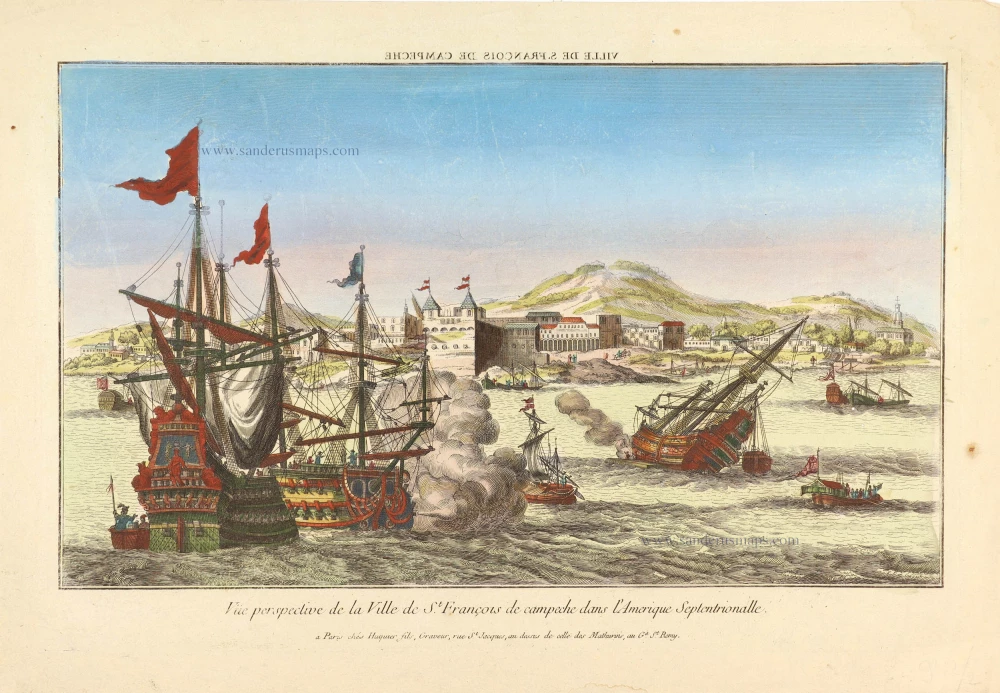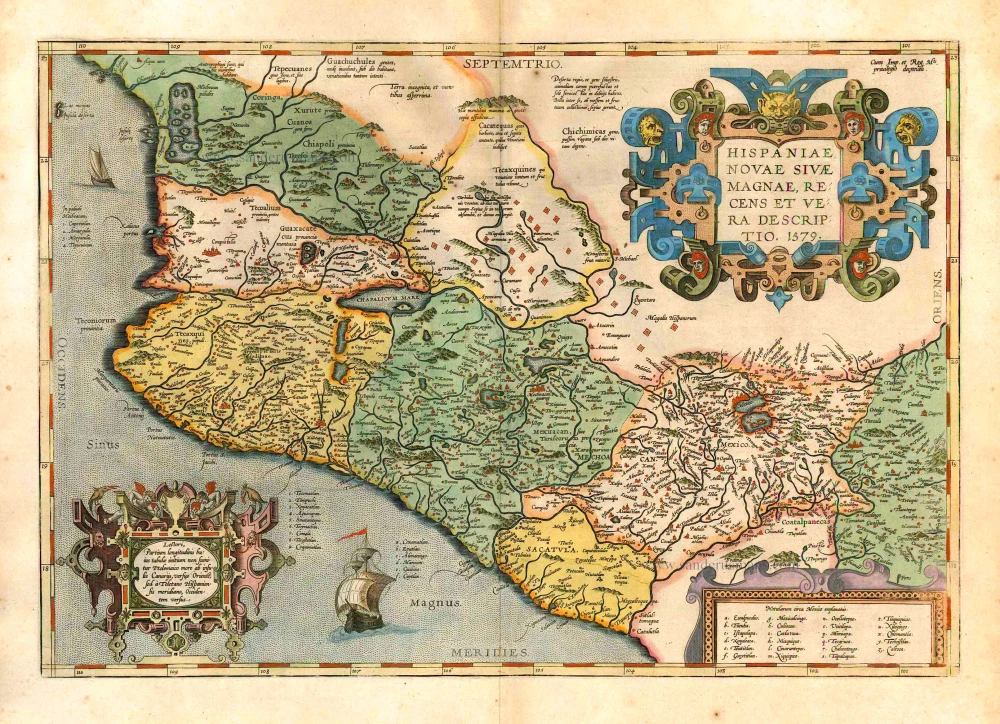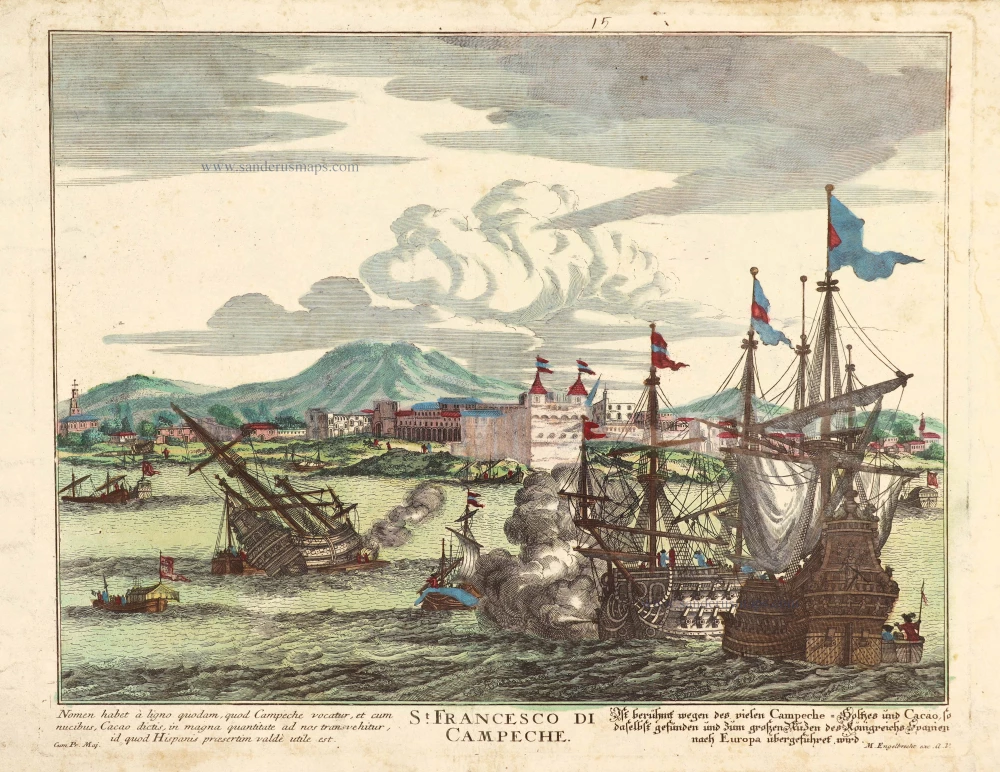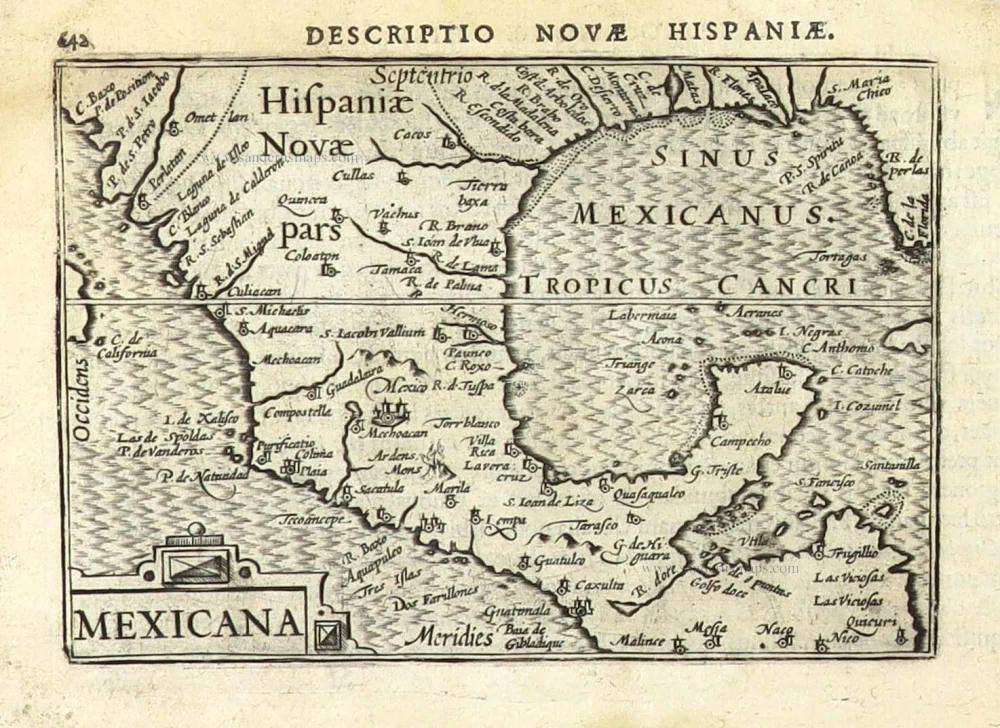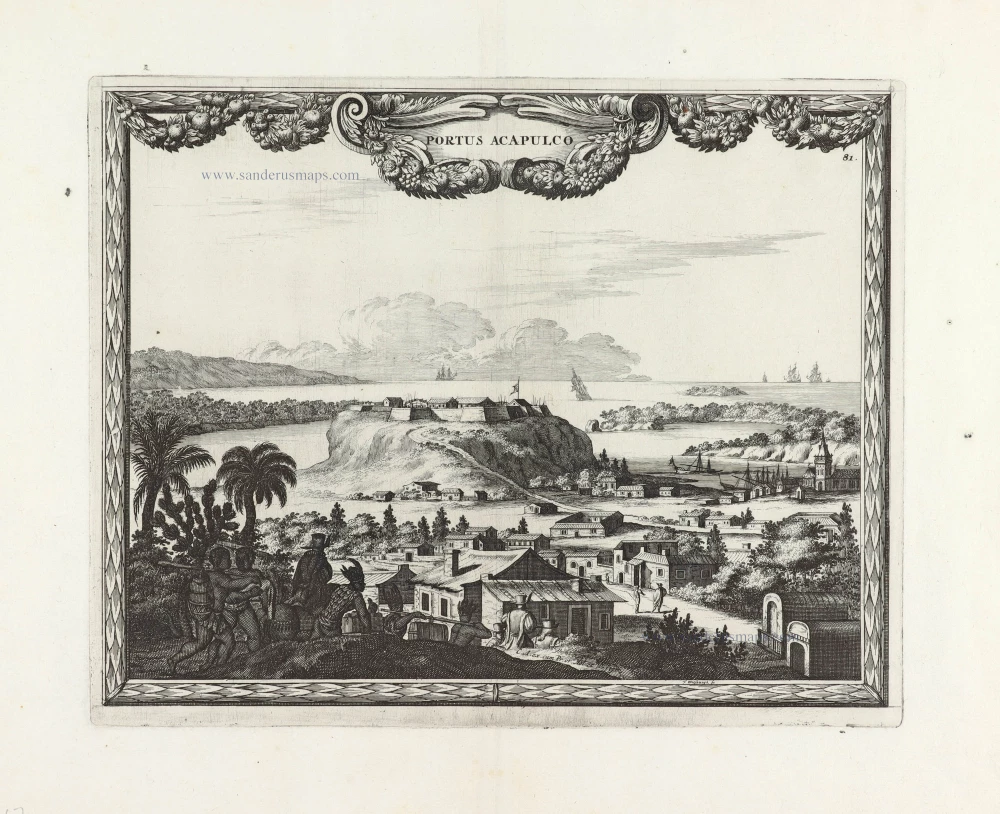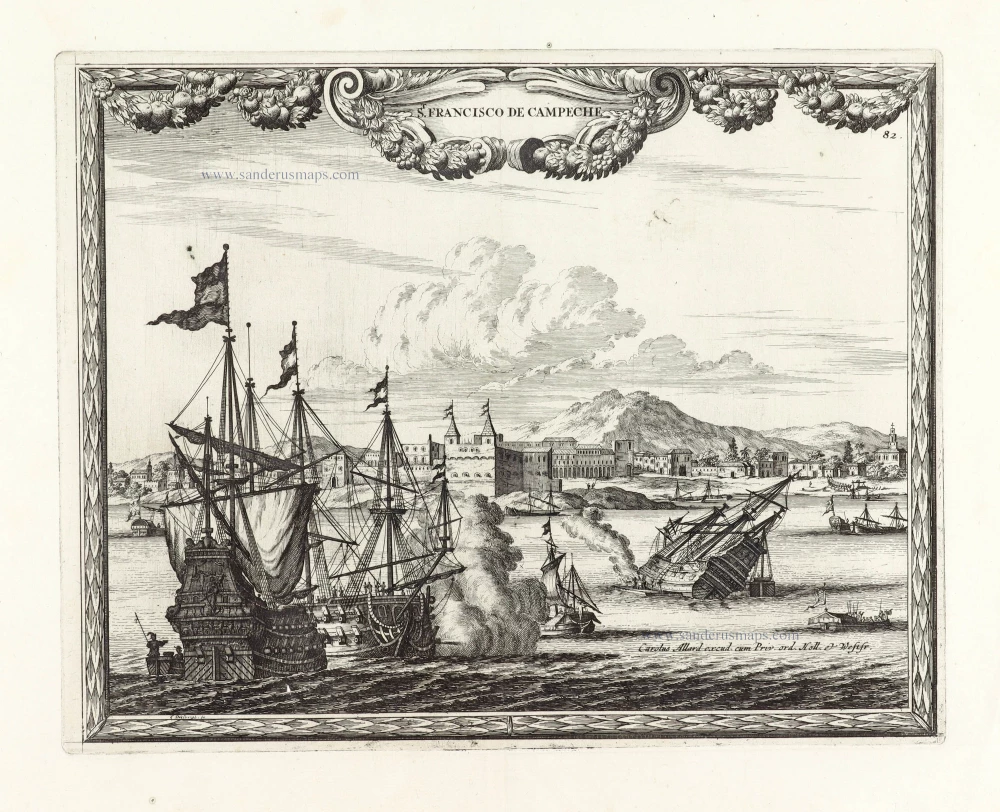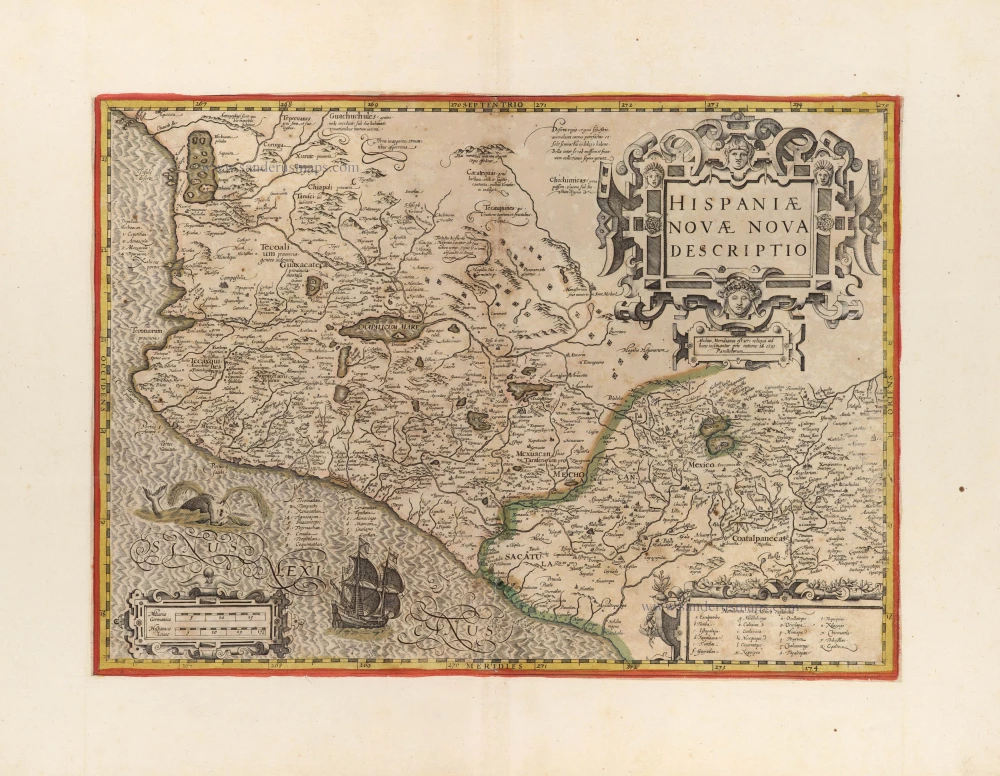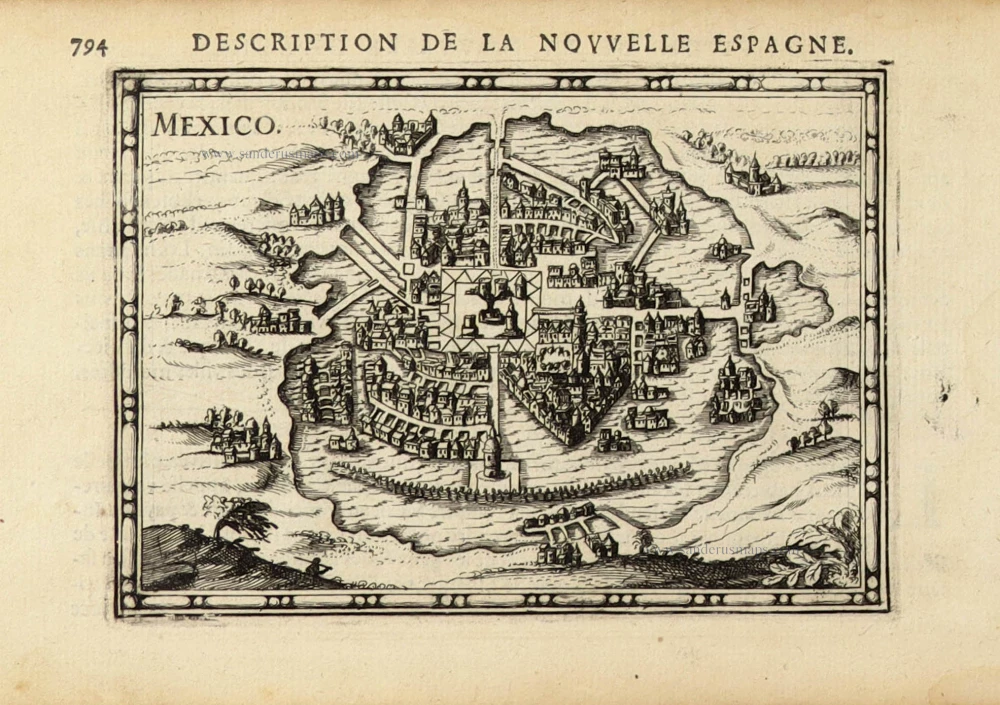Perspective view of a naval battle off the town of St. François (Campeche - Mexico). ca. 1780
Optical View (French: Vue d'optique)
An optical view is a type of 18th-century hand-coloured engraved print to be viewed through a special optical device. It depicts architectural, city, or landscape scenes and is designed to give a strong illusion of depth and perspective when seen through a magnifying lens or viewing box. Characteristic of an optical view is the reversed inscription: The titles or captions were often printed backwards, because the viewing device used a mirror that would flip the image right-side up again. The artists enhanced depth with bold converging lines and bright colours. The optical views were used for popular entertainment and education, a way for people to "travel" visually. They originated in France and England around the 1740s and became fashionable across Europe. They were often sold by travelling print sellers or displayed in fairs and parlours.
Vue prespective de la Ville de St. François de campech dans L'Amerique Septentrionalle.
Item Number: 28994 Authenticity Guarantee
Category: Antique maps > America > North America
Old, antique perspective view of a naval battle off the town of St. François (Campeche - Mexico).
Title: Vue prespective de la Ville de St. François de campech dans L'Amerique Septentrionalle.
A Paris chés Huquier fils, Graveur, rue St Jacques, au dessus de celle des Mathurins, au Gd St. Remy.
Date: ca. 1780.
Copper engraving, printed on paper.
Map size: 260 x 390mm (10.24 x 15.35 inches).
Sheet size: 305 x 440mm (12.01 x 17.32 inches).
Verso: Blank.
Condition: Original coloured, excellent.
Condition Rating: A+.
Separate publication.
Optical View (French: Vue d'optique)
An optical view is a type of 18th-century hand-coloured engraved print to be viewed through a special optical device. It depicts architectural, city, or landscape scenes and is designed to give a strong illusion of depth and perspective when seen through a magnifying lens or viewing box. Characteristic of an optical view is the reversed inscription: The titles or captions were often printed backwards, because the viewing device used a mirror that would flip the image right-side up again. The artists enhanced depth with bold converging lines and bright colours. The optical views were used for popular entertainment and education, a way for people to "travel" visually. They originated in France and England around the 1740s and became fashionable across Europe. They were often sold by travelling print sellers or displayed in fairs and parlours.

